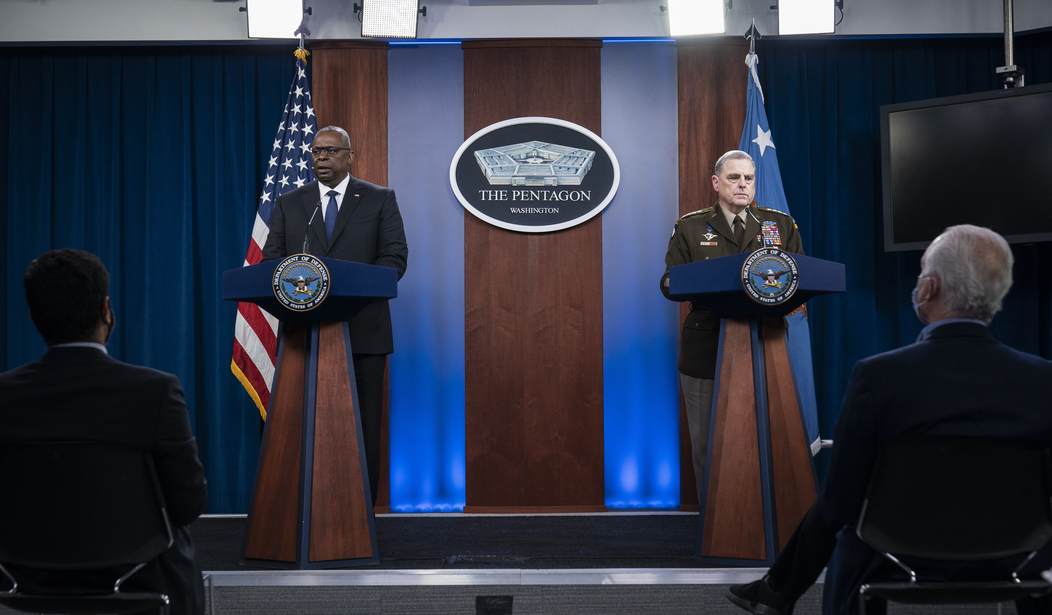Dulles, Virginia – Military recruiters are warning of another disastrous outcome for attracting young Americans into the service of our country. Fiscal year 2022 was the worst recruiting effort since the start of the all-volunteer force, and FY 2023 is shaping up to be even worse. The Army and Air Force each expect to fall 10,000 recruits short of their goals while the Navy anticipates falling 6,000 recruits shy of their needs.
Now, 50 years after the all-volunteer force began, the trend for recruiting, and its impact on end strength, is tragic and threatens our national security.
In August 1972, as the transition to an all-volunteer force progressed, President Richard Nixon explained, “we will no longer need conscription to fill manpower requirements after July 1973.” Nixon put his faith in America’s youth and for half a century they responded and made us proud. But today’s all-volunteer model faces bigger challenges than at any time in its short life.
In theory, the necessary components for a successful all-volunteer force are few and simple: First, our leaders must create and manage a military that young Americans are eager to join. Second, our nation must produce adequate numbers of young Americans that are qualified to enlist. Sadly, we are failing on both counts.
Since 2018, the public’s esteem for the military has plummeted according to the Reagan National Defense Survey. In that time, the percentage of Americans who say they have a great deal of trust and confidence in the armed forces has gone from 70 percent to just 48 percent. The contributing factor most cited is an overly politicized military leadership.
Today’s leaders have damaged the military brand by promoting woke nonsense. The policies they’ve embraced damage the esprit de corps which results from a common pursuit of excellence and achievement. They also confiscate limited training hours that are needed to teach troops how to stay alive.
Recommended
Secretary Lloyd Austin, in particular, impugned the integrity of his troops and damaged his own institution’s reputation, when he issued a memo on “Extremism in the Ranks.” It blamed his troops for widespread “corrosive behaviors” and “discrimination, hate, and harassment,” among other slurs. His accusations have twice been debunked by his own DoD and the Rand Corporation, but he has yet to apologize.
They demoralized veterans of the Global War on Terrorism (GWOT) by allowing 20 years of sacrifice in Afghanistan to end in tragedy. Those GWOT veterans are now advising their own children on whether or not they should enlist and continue the family tradition. Many are opting not to. Military leaders callously tossed 8,000 troops from the ranks because of their deeply held concerns about the Covid vaccine. Low pay and rising inflation have caused a growing number of active duty troops to need food stamps or other assistance to feed their families. Veteran suicide rates and increasing reports of sexual assault in the ranks further contribute to the diminished regard young men and women have for today’s military.
In response, recruiters are being promoted to the rank of Santa Claus. They are offering a lot to get kids to sign up – generous enlistment bonuses, training assistance, education benefits, accelerated promotions, reduced time commitments, choice of duty station, and more. But potential recruits are still saying no because they no longer believe in the exceptionalism of America’s military. But even if these tactics did work, we’d still just be tinkering around the edge of the problem.
The biggest impact on recruiting will come when we increase the size of the youth recruiting cohort. The main demographic from which recruiters draw are 18-24-year-olds, of which there are roughly 32 million Americans. Each year, the services combined must attract roughly 200,000 recruits to meet their goals. It sounds easy to convince 200,000 out of 32 million to join but, sadly, that’s not the end of the story.
Of the 32 million who are age 17-24, nearly 99 percent are ineligible for military service because of physical or academic limitations, or they are simply uninterested in serving. That leaves an annual pool of about 465,000 young Americans who are interested in, and qualified for, military service. From this pool, the services compete for 200,000 hard chargers.
These trend lines become more problematic each year. Until we have a population of 2-3 million youth who are academically capable, physically fit, and desirous of joining the military, recruiters will struggle.
This is a problem that will take many years to fix, perhaps a generation or two. To get started, the President should declare a national imperative and marshal the resources of government and the private sector to reverse these trends.
Anti-military bias needs to be eliminated from public schools, physical fitness must be made mandatory, incentives offered to reduce childhood obesity, military education programs introduced into the classrooms, and JROTC units need to be stripped of tired leaders and replaced with those who will teach, train, and inspire.
Congress should create a Cadet Grant Program to provide funding to private cadet outfits which introduce America’s youth to military training and customs. Many private organizations do a great job inspiring kids and helping them realize what they are capable of accomplishing.
Military recruiters work hard in an often thankless and difficult environment. They need the nation’s help to prepare teens for service, and they need authentic leaders who will carry out their constitutional obligations to provide for the common defense.
Tom Kilgannon is the President of Freedom Alliance, a nonprofit organization that provides support to America’s military families and advocates for a strong national defense. @TomKilgannon3 on Twitter.

























Join the conversation as a VIP Member